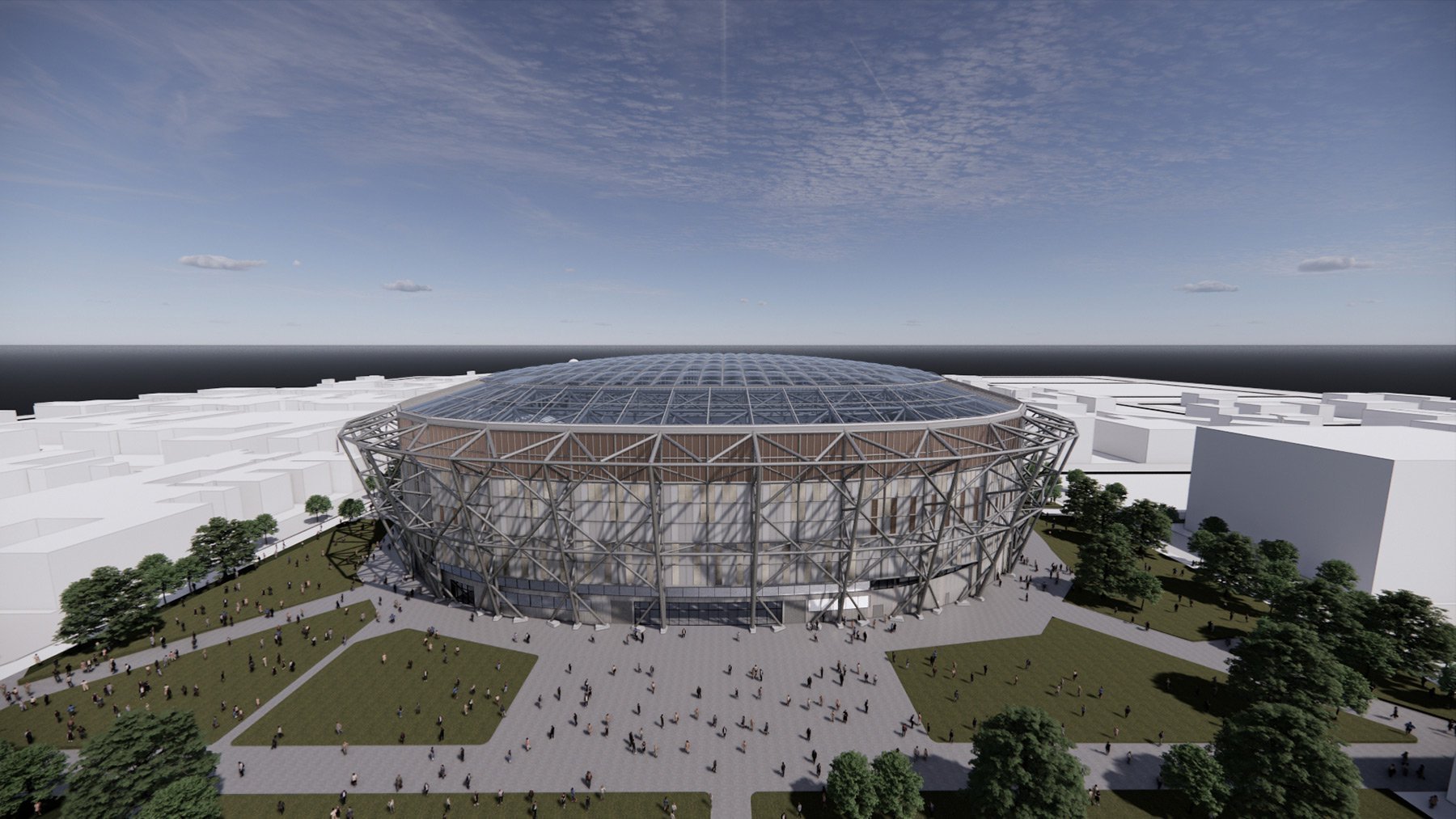Preliminary design images for the Canterbury Multi-Use Arena have been released.
Crafted by Christchurch-based architects Warren & Mahoney and international stadium design experts Populous, the images provide an external view of how the Canterbury Multi-Use Arena (CMUA) will sit on the site and a more detailed internal illustration from the stands during a sporting event.
CMUA Project Delivery Ltd Board Chair Barry Bragg says the preliminary designs, developed by the Kōtui consortium, provide the most accurate picture yet of what the facility will look like once completed.
“These designs crystallise our vision for the CMUA to be the most modern, fit-for-purpose arena in the country – a facility that leads the way from an innovation and sustainability perspective.’’
The CMUA will occupy much of the central Christchurch site bordered by Hereford, Barbadoes, Tuam and Madras streets. At 232 metres long, 195 metres wide and 36 metres high at its tallest point, the arena will have a seating capacity of 30,000 for sporting events and up to 37,800 in concert mode.
“We know people are really excited about the prospect of having a covered arena in the heart of the city and we hope these preliminary designs will capture people’s imaginations and give them a glimpse of what is to come.
“We are well on the way towards delivering Christchurch a world-class covered arena with high-quality acoustics that is capable of hosting top international music concerts as well as major international sporting fixtures,’’ Mr Bragg says.
The designs for the CMUA have developed significantly from the 2019 concepts to reflect the seismic requirements and to improve the health of the turf, the fan experience, the multi-use functionality, and to maximise the sunlight and minimise the noise impacts for neighbouring properties.
Because the roof needs to be a 175 metre by 210 metre single span across the field, the architects have opted for an oculus-style roof that has been designed as an independent structure to increase its strength. The dome shape provides extra rigidity to the roof diaphragm.
The preliminary designs are the first images to be published since the project’s investment case was first completed and approved at the end of 2019.
Councillors will meet to approve the complete preliminary design package in January, with the developed design scheduled to be completed by April. The Council will then decide whether to approve the Design and Construction contract in the middle of 2022.











